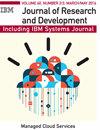Key Areas to Economic Takeoff from Demographic Dividend: A Case of Nepal
IF 1.3
4区 计算机科学
Q1 Computer Science
引用次数: 0
Abstract
Rapid demographic change in the context of age structure and basic demographic indicators have created opportunity to accelerate economic growth and development in Nepal. At the time of favorable demographic context, it is required to qualify and mobilize currently existing large volume of active years population to fulfill the mission of sustained economic development. For this, it is necessary to invest on health, education, infrastructure along with creating employment opportunities but such opportunity period is missing out due low attention on social, economic, political and cultural sectors, which may misfortune for Nepal. Focusing on the key areas of economic take off in the declined fertility context, this paper reviews literature related to reaping demographic dividend. Based on secondary data from journal articles, census and Nepal Demographic Health Survey (NDHS) results, descriptive and content analysis method is applied. National Census data from Central Bureau of Statistics (CBS) and Nepal Demographic Health Survey (NDHS) is taken as reference and some estimation from United Nations (UN) are also taken as requirement. To identify vital areas and situation to support economic take off and support to formulate and implement proper future population policy in Nepal are the main objectives of this article. Coping with socio-economic challenges need to focus on primary area of social development like education, productivity of labor, proper use of remittance to economic take off. Need to open gate for secondary demographic dividend with appropriate policy formulation in the recent context.人口红利带动经济腾飞的关键地区——以尼泊尔为例
在年龄结构和基本人口指标方面的迅速人口变化为加速尼泊尔的经济增长和发展创造了机会。在人口条件有利的情况下,需要对现有的大量活动年龄人口进行合格和动员,以完成经济持续发展的使命。为此,有必要投资于卫生、教育、基础设施以及创造就业机会,但由于对社会、经济、政治和文化部门的关注不足,尼泊尔错过了这样的机会期,这可能会给尼泊尔带来不幸。本文以生育率下降背景下经济起飞的关键领域为研究对象,综述了人口红利获取的相关文献。基于来自期刊文章、人口普查和尼泊尔人口健康调查(NDHS)结果的二手数据,采用描述和内容分析方法。参考中央统计局(CBS)和尼泊尔人口健康调查(NDHS)的全国人口普查数据,并以联合国(UN)的一些估计为依据。确定重要的领域和情况,以支持经济起飞和支持制定和实施尼泊尔适当的未来人口政策是本文的主要目标。应对社会经济挑战需要把重点放在教育、劳动生产率、正确使用汇款等社会发展的主要领域,以促进经济起飞。需要在当前背景下,通过适当的政策制定,为二次人口红利打开大门。
本文章由计算机程序翻译,如有差异,请以英文原文为准。
求助全文
约1分钟内获得全文
求助全文
来源期刊

IBM Journal of Research and Development
工程技术-计算机:硬件
自引率
0.00%
发文量
0
审稿时长
6-12 weeks
期刊介绍:
The IBM Journal of Research and Development is a peer-reviewed technical journal, published bimonthly, which features the work of authors in the science, technology and engineering of information systems. Papers are written for the worldwide scientific research and development community and knowledgeable professionals.
Submitted papers are welcome from the IBM technical community and from non-IBM authors on topics relevant to the scientific and technical content of the Journal.
 求助内容:
求助内容: 应助结果提醒方式:
应助结果提醒方式:


